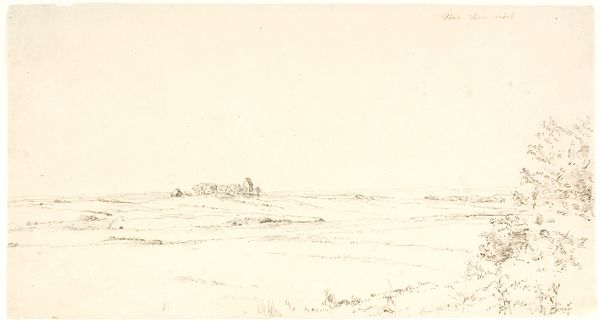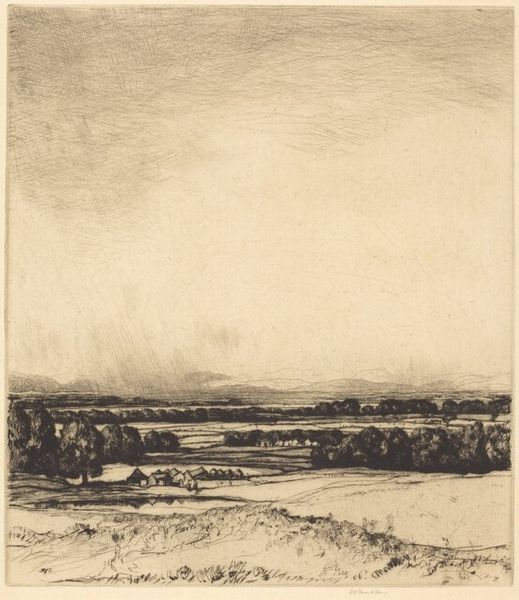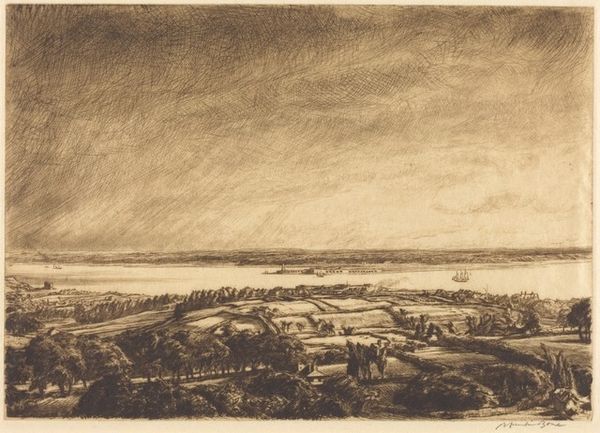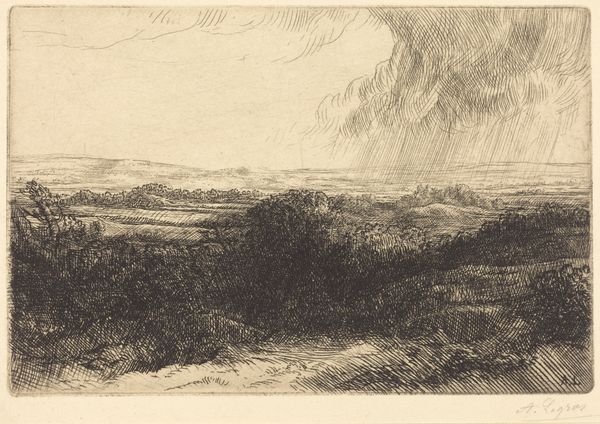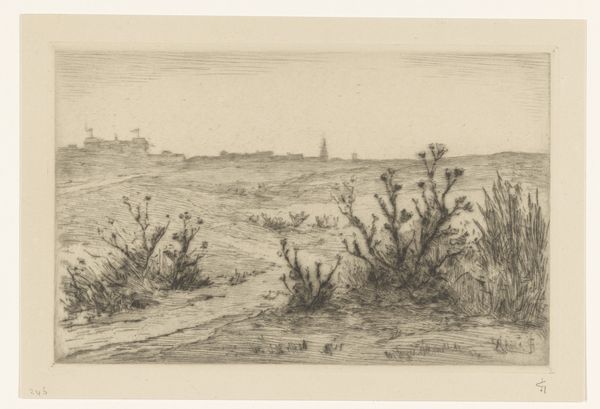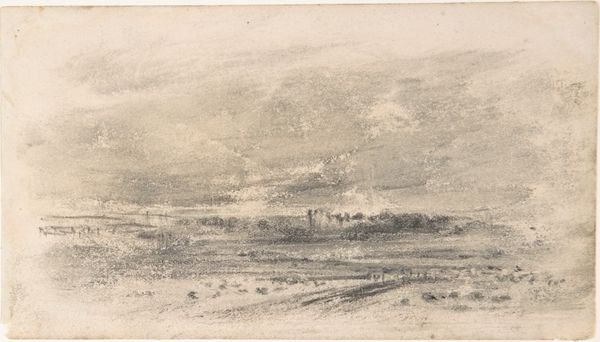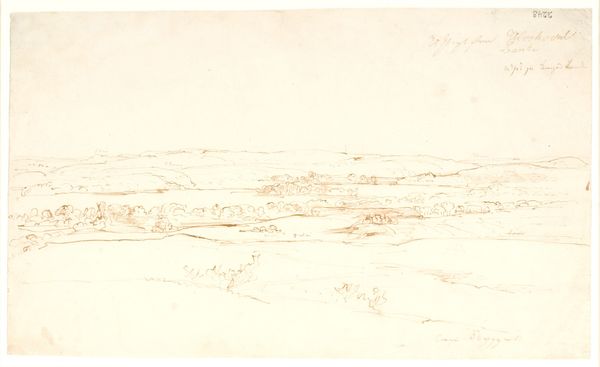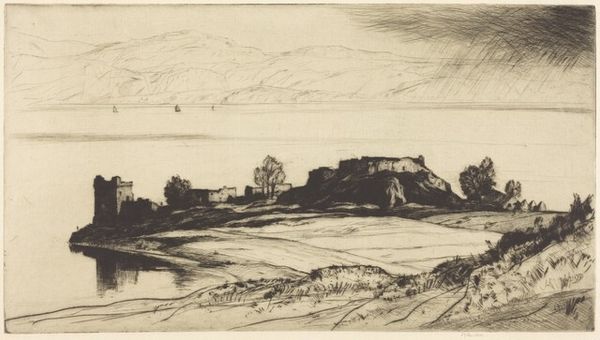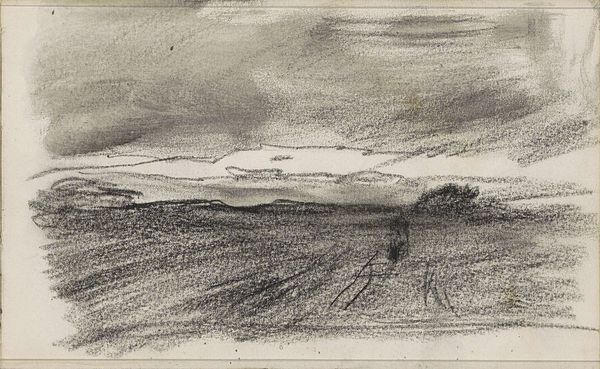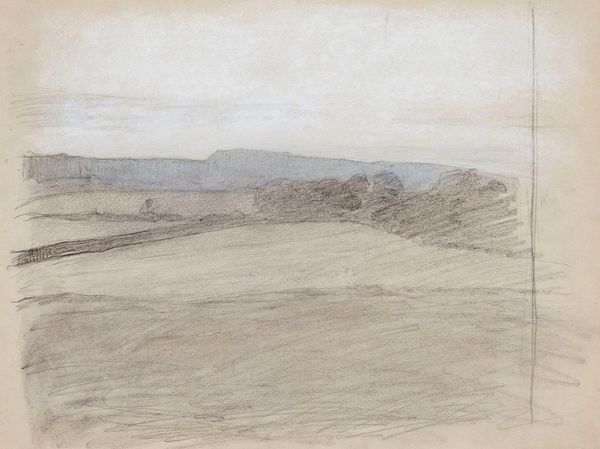
Dimensions: plate: 17.78 × 25.4 cm (7 × 10 in.)
Copyright: National Gallery of Art: CC0 1.0
Muirhead Bone made this etching, "Wilmington, Sussex," sometime in the early 20th century. The image presents a seemingly simple country scene, yet, as historians, we should ask what kind of cultural values are embedded in this depiction of rural England. Bone was known for his architectural and landscape etchings, often celebrated for their precision and detail. Here, the seemingly untouched landscape and quaint village present a vision of England as a timeless, pastoral ideal. This kind of imagery was very popular in a rapidly industrializing England, but what does it leave out? Consider the social and economic realities of rural life at the time. The decline of agricultural labor, the impact of industrialization on rural communities, and the class divisions inherent in the English countryside are all conspicuously absent. To understand this work fully, we need to consult sources beyond the art world, from social surveys to economic data and local histories. The apparent simplicity of "Wilmington, Sussex," belies a complex web of social and cultural forces, waiting to be untangled by the diligent researcher.
Comments
No comments
Be the first to comment and join the conversation on the ultimate creative platform.
